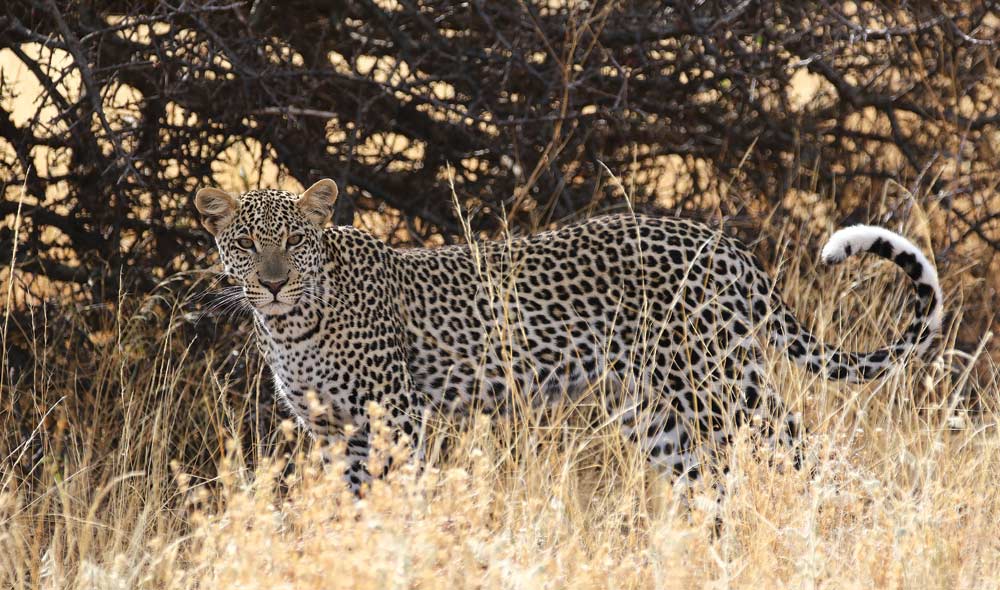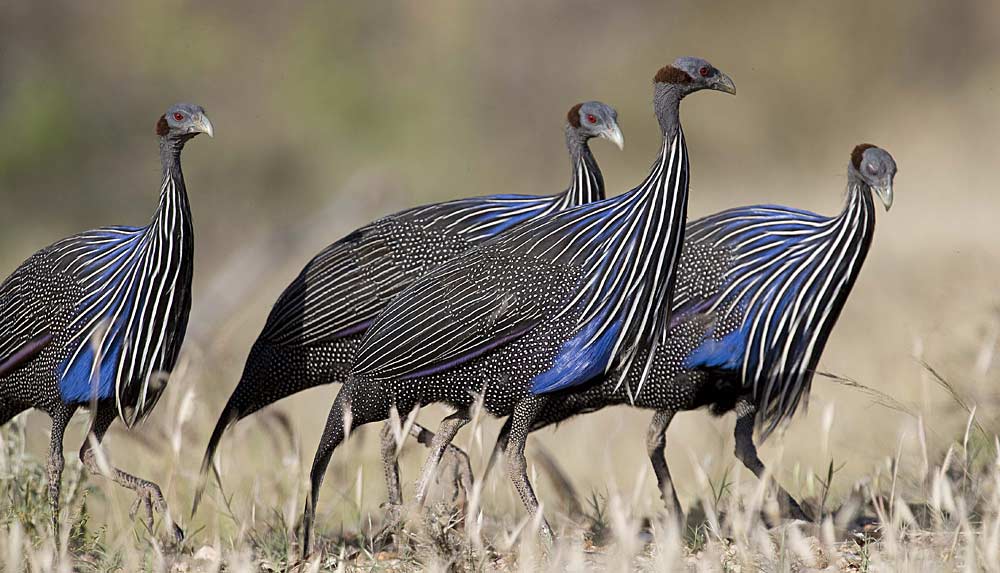Hot and arid, Samburu National Reserve lies on the fringes of the vast desert that was once known as the ‘Northern Frontier District’, whose heat-scorched scrublands extend all the way to the jade-green waters of Lake Turkana and beyond.
The Reserve is an evocative cocktail of uniquely contrasting habitats. The landscape veers from stark cliffs and boulder-strewn scarps to lush swamps and muddy sandbanks. And from bone-dry bush to fronded riverine forests. A painted desert of brilliant colours, often set against dramatic skies, this is the realm of the indigenous succulent known as the ‘Desert Rose’, which bursts into exotic pink bloom amid the golden rocks and khaki scrub.
The plains of darkness
Known by the local nomadic tribe, the Gabbra, as ‘the Plains of Darkness’, Samburu National Reserve is essentially a lava plain theatrically punctuated by dry riverbeds (wadis), steep-sided gullies, rounded hills and harsh outcrops of ancient basement rocks. Roughly in its centre rises the stark outline of Koitogor Mountain.
The lifeblood of this dust-dry desert region is the the Ewaso Ng’iro River. It meanders in mud-brown loops throughout the reserve and is home to plentiful pods of snorting and chortling hippos. On its raised sandbanks immense Nile crocodiles bask, completely still, utterly camouflaged and menacingly patient. Amid the dense riverside thickets impala, common waterbuck and buffalo lurk.
The wildlife of Samburu
Prey to the harsh dictates of a dry country ecosystem, the reserve is prone to large variations in the animal populations as they move about in search of water and pasture. However, elephant encounters are common as large herds roam the reserve and they are best seen crossing the river, or returning to its banks at dusk to bathe.

The Reserve holds healthy numbers of lions, leopards and cheetahs as well as spotted and striped hyenas, bat-eared foxes and common genets. In the heat of the day, droves of banded and dwarf mongooses scurry in voracious hunting bands. At night golden and black-backed jackals prowl and aardwolves are occasionally seen.
Samburu is one of the few areas in Kenya where one can view the endangered Grevy’s zebra, which with its rounded ‘Mickey Mouse’ ears is notably different from its more common cousin, the Burchell’s zebra, which also roams the reserve. Other browsers of the thorny shrub include the magnificent reticulated giraffe – also endangered – and the rare Beisa oryx. There are also elands, impalas, Bright’s gazelles (the pale northern species of Grant’s gazelle) and the beautiful long-necked gerenuk, also known as the ‘giraffe gazelle’. Elsewhere rooting warthogs and Kirk’s and Guenther’s dik-diks can be seen, and in small numbers both lesser and greater kudus.

Samburu’s incredible birdlife
Samburu’s birdlife is so abundant that over 100 species can be spotted in a day. Perhaps most noteworthy of the sightings is the rare blue-shanked Somali ostrich. The most memorable perhaps is the flash of coral rump that flags the flight of the white-headed buffalo-weaver. Secretary birds are plentiful, as are bands of bustling helmeted and vulturine guineafowls.

Along the river, storks feed and sand grouse congregate at dusk. Both red-billed and Von der Decken’s hornbills are common. The Reserve’s characteristically rugged cliffs and starkly rising inselbergs provide the ideal habitat for raptors, which range in size from the tiny pygmy falcon to the giant martial eagle. Verreaux’s eagle owls also hunt the rivers.
Samburu National Reserve – Fact File
Altitude: 850-1,230 meters above sea level.
Area: 165 sq km.
Location: Samburu County, Rift Valley Region.
Distance from Nairobi: 320 km north-east of Nairobi.
Roads: 4WD is recommended for the journey to and within the reserve. 2WD vehicles with good ground clearance can be used outside the rainy seasons.
Gates: In addition to the main Archer’s Gate, there is Uaso Gate which leads to Buffalo Springs Reserve, and West Gate which leads to Wamba.
© 2025 Kenya Holidays
